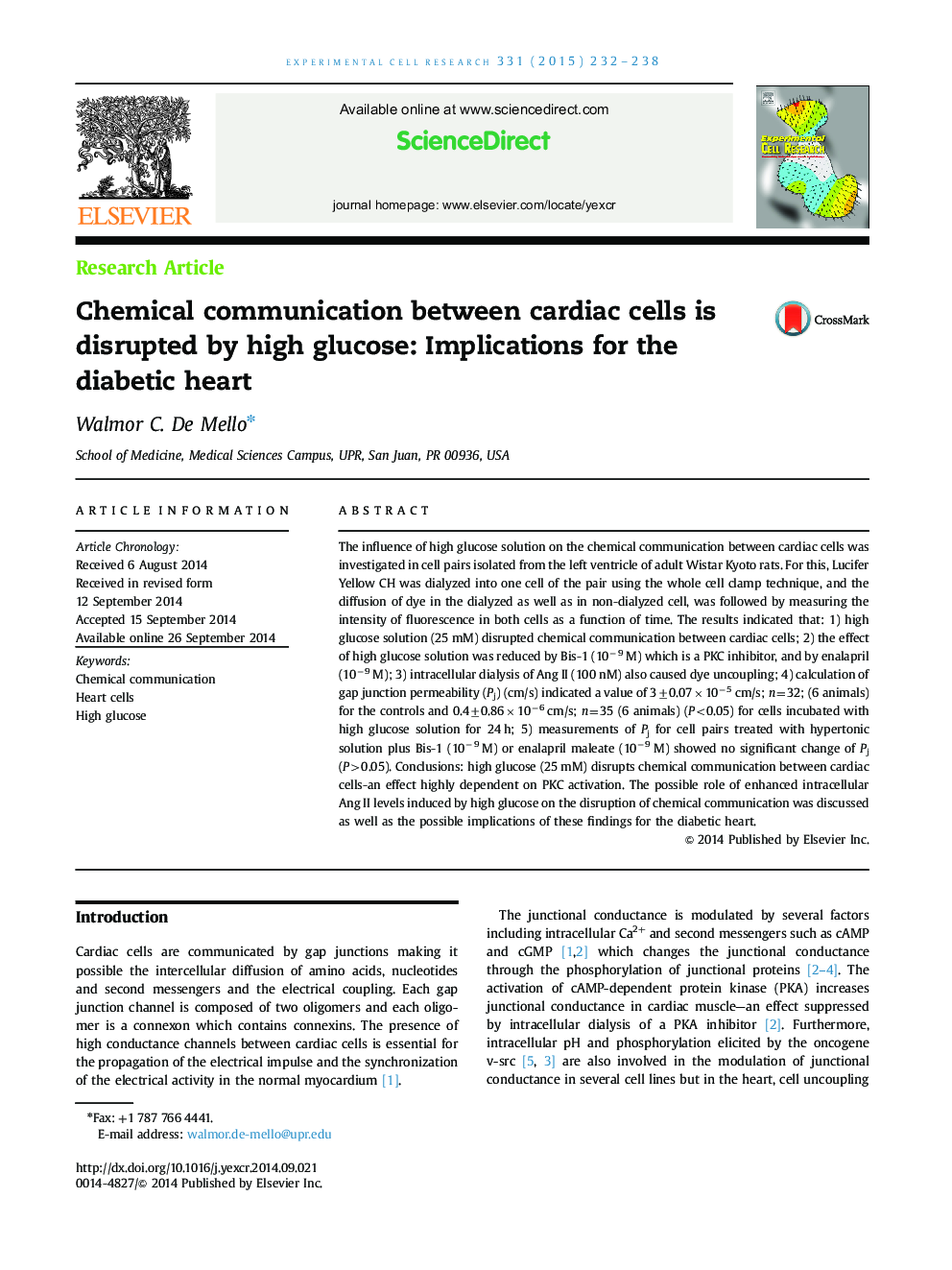| Article ID | Journal | Published Year | Pages | File Type |
|---|---|---|---|---|
| 10903946 | Experimental Cell Research | 2015 | 7 Pages |
Abstract
The influence of high glucose solution on the chemical communication between cardiac cells was investigated in cell pairs isolated from the left ventricle of adult Wistar Kyoto rats. For this, Lucifer Yellow CH was dialyzed into one cell of the pair using the whole cell clamp technique, and the diffusion of dye in the dialyzed as well as in non-dialyzed cell, was followed by measuring the intensity of fluorescence in both cells as a function of time. The results indicated that: 1) high glucose solution (25 mM) disrupted chemical communication between cardiac cells; 2) the effect of high glucose solution was reduced by Bis-1 (10â9 M) which is a PKC inhibitor, and by enalapril (10â9 M); 3) intracellular dialysis of Ang II (100 nM) also caused dye uncoupling; 4) calculation of gap junction permeability (Pj) (cm/s) indicated a value of 3±0.07Ã10â5 cm/s; n=32; (6 animals) for the controls and 0.4±0.86Ã10â6 cm/s; n=35 (6 animals) (P<0.05) for cells incubated with high glucose solution for 24 h; 5) measurements of Pj for cell pairs treated with hypertonic solution plus Bis-1 (10â9 M) or enalapril maleate (10â9 M) showed no significant change of Pj (P>0.05). Conclusions: high glucose (25 mM) disrupts chemical communication between cardiac cells-an effect highly dependent on PKC activation. The possible role of enhanced intracellular Ang II levels induced by high glucose on the disruption of chemical communication was discussed as well as the possible implications of these findings for the diabetic heart.
Related Topics
Life Sciences
Biochemistry, Genetics and Molecular Biology
Cancer Research
Authors
Walmor C. De Mello,
